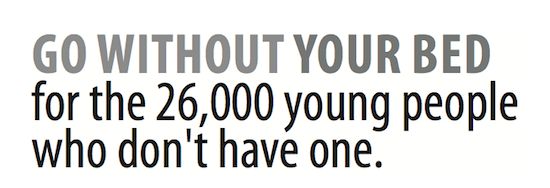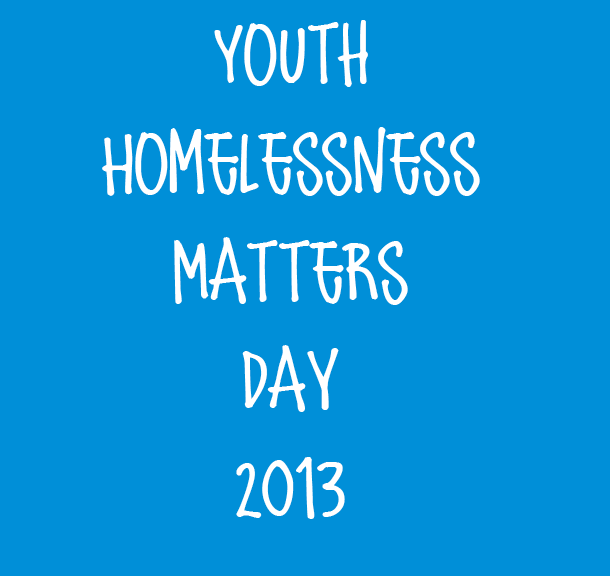Youth Homelessness
The Aims of Youth Homelessness Matters Day are to:
- Raise Public Awareness about youth homelessness and the factors that cause it. Most people have an image of homelessness as being about older people sleeping rough on the streets. Also that youth homelessness is everyone’s business.
- Celebrate the Resilience of Young People to convey a message that young people experiencing homelessness are homeless, but not helpless! YHMD aims to communicate that with good support and accommodation young people can move forward and live their lives productively.
- Provide information to the general public about how they can help to end youth homelessness. Many community members are sympathetic to the plight of homeless people however often find it hard to know how they can help. YHM Day aims to help people get not only facts and figures on homelessness but how to directly aid homeless young people in their community.
About Youth Homelessness
What is youth homelessness?
Youth homelessness does not just mean sleeping rough on the streets. There are three different types of homelessness as defined by the Australian Bureau of Statistics and these are considered the standard cultural definition of homelessness in Australia.
Primary homelessness includes all people without a ‘roof over their head’. This means people who are living on the streets, sleeping in parks, squatting in derelict buildings or using cars or trains as temporary shelter.
Secondary homelessness includes people who frequently move from one type of shelter to another. This includes people living in homeless services, hostels, people staying with other households who have no home of their own and people staying in boarding houses for 12 weeks or less.
Tertiary homelessness refers to people who live in boarding houses on a medium to long term basis (more than 13 weeks), who live in accommodation that does not have ‘self-contained facilities’ for example they do not have their bathroom or kitchen and who don’t have the security provided by a lease. They are homeless because their accommodation does not have the characteristics identified in the minimum community standard for housing.
Source: Chamberlain and MacKenzie 20 Counting the Homeless Report 2006, ABS



